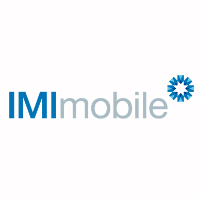How digital & mobile messaging channels can prevent contact centres falling foul of Ofcom regulations
 With OFCOM due to announce another potential crackdown, it looks like old-fashioned telesales is doomed. Are we witnessing the final days of outbound cold calling?
With OFCOM due to announce another potential crackdown, it looks like old-fashioned telesales is doomed. Are we witnessing the final days of outbound cold calling?
Darren Gracie from cloud communications customer engagement specialist IMImobile suggests now might be the right time for companies to start mixing traditional outbound with new interactive digital and mobile permission-based customer contact channels.
Ofcom & Ofwat are driving change in regulations
Ofcom says that each year UK consumers receive 4.8bn nuisance calls, 1.7bn sales calls, 1.5bn silent calls, 940m recorded messages, and 200m abandoned calls. In the twelve months to October 2015, Ofcom received 44,900 complaints. In February 2016, Brighton-based Prodial was fined £350,000 by the ICO for making more than 46m automated marketing calls – the largest ever fine.
In light of all this Ofcom has announced a zero tolerance approach and regulatory changes going forward, which are likely to pose an increased risk to the contact centre industry.
It’s not only Ofcom imposing new regulations. Last year Ofwat announced customer contact and customer satisfaction now form part of the Service Incentive Mechanism (SIM) guide, which encourages water companies to improve their performance. The poorest performers during 2010 – 2015 were fined a total of £79m.This could mean huge penalties for water companies making excessive unwanted calls.
In the internet age of smartphone savvy consumers, who are not only more aware than ever of spam and privacy laws, but also easily contactable in many other ways, there is a feeling that outbound calling is just, well, a bit out-of-date. So is it time to rethink the use of outbound?
The downsides of outbound
Let’s be honest, outbound dialing is an expensive channel, despite having produced profits for telecom, broadband and utilities companies in the past. It costs an average of 60p a minute to contact customers via voice. In comparison, text messaging can be a tenth the cost of IVR and one hundredth that of a live agent.
Given the ready availability of cheaper digital channels – including pay-per-click for lead generation, email marketing for nurturing leads, and self-service portals and interactive messaging for converting sales – the cost-per-acquisition or cost-per-sale of outbound telemarketing is getting to be prohibitively high in comparison.
Then there is the fact that a lot of the people a company would be targeting with outbound calls generally don’t like to receive them. That is often the case even when an existing relationship exists.
And finally, outbound calling – even with a dialer and even to existing customers for service issues – is an inefficient use of agents’ time. The number of genuinely useful contacts per hour is in the single figures. And those conversations can be time consuming for both consumer and company, certainly compared to receiving and responding to a text message.
If you’re looking for ways to proactively create sales, provide pre-emptive service, and deliver notifications to customers, there are now several better ways of achieving the same results.
A new messaging savvy generation
One hallmark of a good omni-channel strategy is the ability to improve efficiencies and results by combining different channels to optimise customer journeys.
Despite high levels of engagement and increasing demand from consumers, two-way text messaging is being overlooked as a communication channel by many companies.
The latest research by mobilesquared reveals that 33.67 million mobile users in the UK have opted in to receive text messages from brands and businesses in 2016 – a figure which accounts for 65% of mobile users aged 18 plus, or 52% of the total population. That will reach 48.65 million by 2020, meaning brands and businesses will be able to connect with almost three-quarters of the UK population via text messaging alone.
With the average SMS chat up to 75% cheaper than the equivalent voice call, two-way SMS is the perfect channel for initial customer contact, outbound call warm-ups or low value customer service.
When outbound phone calls must be made, innovative use of multiple channels can help to improve results and reduce costs. For example, a high street bank’s collections team has found that customers with overdue loan payments are 50% to 60% more likely to answer an outbound call if it is preceded by a friendly, two-way warm-up text arranging a time for the outbound call.
As messaging services evolve, companies will be able to do even more with them. For example, Facebook Messenger can already take orders and payments right in the app, and allow customers to self-serve by interacting with chatbots that can handle a wide range of queries before handing off to a live agent if need be, or triggering a request for an outbound call.
In today’s world of smartphones, digital messaging, AI chatbots, and permission-based marketing, it’s much better for the brand image and far more cost-effective to replace outbound calls with other push channels, or combine them where the level of interactivity required justifies a phone call.
At the very least, companies that do all this won’t have to worry about getting an outbound call themselves – from Ofcom.
 Additional Information
Additional Information
IMImobile will be publishing a white paper at the end of October that looks at how contact centres are coping with the challenges of delivering an omni-channel experience utilising digital and mobile engagement channels.
To register for a free copy please Click Here
For additional information on IMImoble visit their Website




